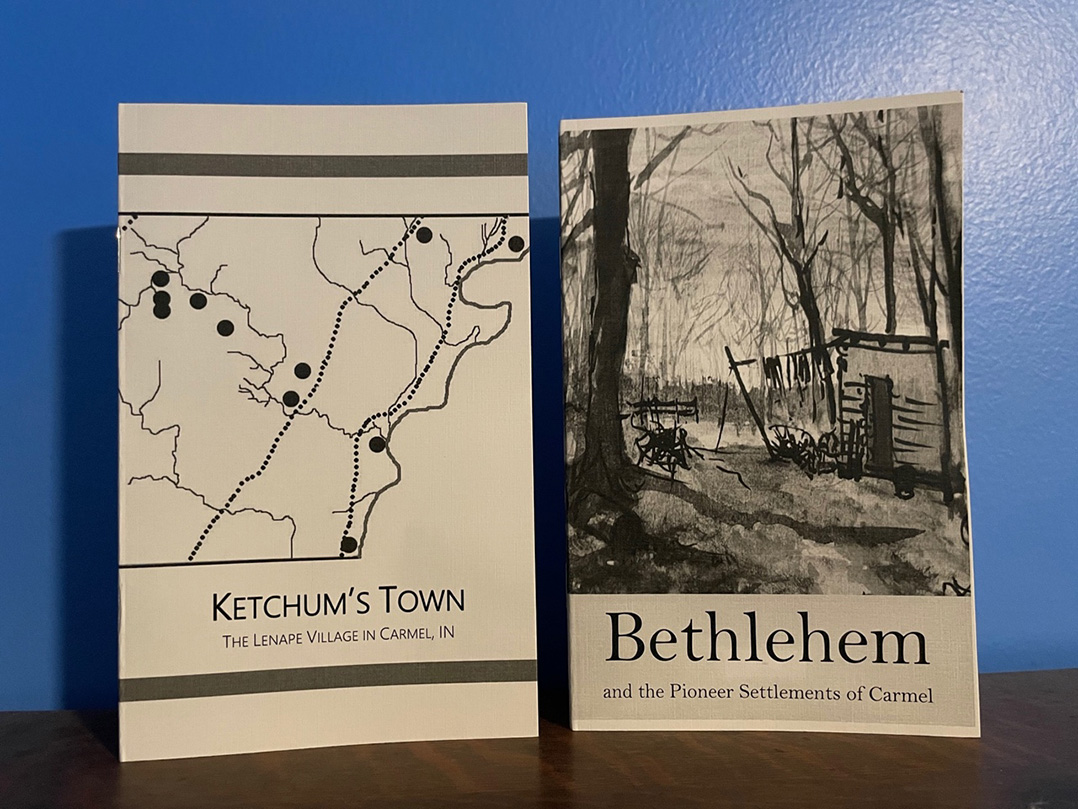Carmel was a frontier wilderness when settlers arrived in 1822.
Carmel Clay Historical Society historian Andrew Wright’s latest book, “Bethlehem and the Pioneer Settlements of Carmel,” describes how settlers built cabins, cultivated land, cut roads and built communities, including the establishment of Bethlehem, now Carmel, in 1837.
“Many of the children of the first pioneers wrote accounts of the earliest years of settlement, so we have a good idea of what life was like,” Wright said. “Some wrote about the dismal first days when they were vulnerable, living in make-shift shelters before their cabins were constructed. These shelters had no doors, just a sheet of fabric covering the opening. The wolves would come around after dark to prey on their sheep, and they would light sticks and brush heaps on fire to keep them away. It required a lot of hard work to build cabins, clear the forests and plant the first crops.”
However, Wright said several settlers wrote that they weren’t hungry because game and wild fruit were abundant in the forest.
Bethlehem was the only town established during the pioneer era, but many small communities centered around churches and schools developed throughout Clay and West Delaware Township. The book covers the pioneer era when Hamilton County was opened for settlement from 1822 to 1850. The pioneer era ended in the 1850s when the state enacted the Free School Law, which called for the establishment of public school districts in each township. The new school districts supplanted the old pioneer settlements and gave rise to new neighborhoods. Sawmills operating throughout Clay and West Delaware Township provided ready lumber for construction of frame buildings, and eventually, the log cabins were replaced.
Along with the new book, “Ketchum’s Town: The Lenape Village,” has been rereleased. It was originally sent only to members in 2018, and this is the first time it’s available for purchase. Wright said it contains new material.
Two centuries ago, the Lenape people lived in villages along the White River that stretched from the Hamilton/Marion County line to Muncie. One of those villages was in Carmel along Cool Creek.
“Ketchum’s Town” is the story of George Ketchum’s family. His mother-in-law Barbara Burget was captured as a girl from a wilderness fort in Kentucky during the Revolutionary War and adopted by Native Americans, and her partner, John Brewitt, was a French‐Canadian fur trader.
Wright said the Ketchums were a prominent Lenape family. George’s uncle, his brother and two of his nephews all held the position of principal chief of the tribe. George was a local chief. Because Lenape towns of the period were often referred to in relation to the local chief, Wright said the previously unnamed town became Ketchum’s Town.
“One new discovery was particularly exciting,” Wright said. “Barbara Burget purchased land for her grandson, Charles Ketchum. It was 80 acres on the northwest corner of Main and Range Line. Her partner, John Brewitt, went back to the land office and had them change the ownership to his name instead of Ketchum’s. Brewitt died a few months later with Charles’ land in his name. Burget and Ketchum had to go to court to regain ownership of the land. We found an entry in the Register of Receipts in the Indiana State Archives that shows Ketchum’s name crossed out and replaced with John Brewitt’s name, proving that the testimonies about the betrayal were true.”
Wright said the Ketchums stayed in their village until 1832, so they lived among the settlers for 10 years.
Both books can be purchased at the Carmel Clay Historical Society’s Monon Depot Museum.





